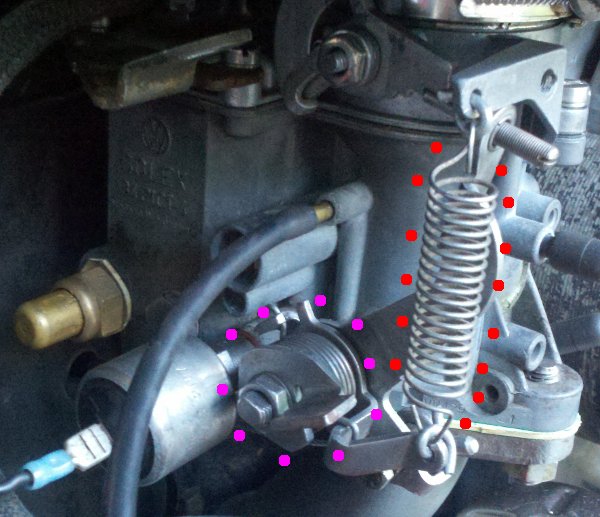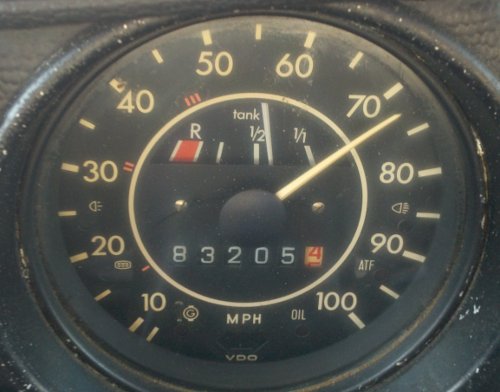I've been a (busy) bad blogger. Lots of stuff happened in the last month; no chance to talk about it.
Very briefly--a few weeks ago I drove my vintage beetle on my every-once-in-a-while 1000-mile work commute. The biggest hold-up had been that I'd wanted a running carburetor and a spare. Well I finally sorted out the problems with the 34PICT-4 I was trying to resurrect. On that trip I probably drive the car over 900 miles.
The biggest thing that wasn't allowing that car to run right was the hole in the throttle plate. That's another post for another time, but just suffice it to say that's a critical parameter for the 34PICT series carburetors.
One thing that'd been troubling me had been the the throttle shaft spring. One of the regulations that went into effect in California that forced the design of the 34PICT-4 was that a carburetor must have a back-up throttle return spring. That way, if the primary spring becomes disconnected or breaks, the secondary spring will keep it from goin to full throttle (a dangerous situation). The carbs I had had the double-spring setup, but the one I was working on didn't work very well. I finally looked at one of the other carbs I had and I realized that was because I was using the wrong sort of spring for the primary.
Here's a photo of the 34PICT-4 that's on the car, with the two springs
highlighted. This setup is the correct one, that I'm running now:

The primary spring is the one that sort of hangs out at the rear of
the carb (toward the camera); it's surrounded by red dots. The
primary is a linear spring. The
secondary spring is a coil spring wrapped around the throttle shaft;
it's surrounded by purple dots.
What I hadn't realized for a while is that the primary spring needs to be a fairly stiff one, so that it overcomes the spring tension of the secondary spring. The primary spring should always compress the secondary spring, and the primary should provide the tension against which the throttle cable works. Since the primary is a linear spring, with nothing dragging on it, the feel of the carburetor is very crisp and it moves easily.
The secondary spring is a coil spring that rubs on itself. It has a lot of friction; if the secondary spring is the one that's closing the throttle, its response is sort of sluggish because its friction. When I'd been assembling the carb earlier, I'd used a weak spring as the primary, which didn't then do anything, so the secondary spring was the one that was closing. Once I put a good strong spring as the primary, then the feel and the movement were much improved.
Here's a quick shot of the speedo at highway speed on the trip up.

Awesome!